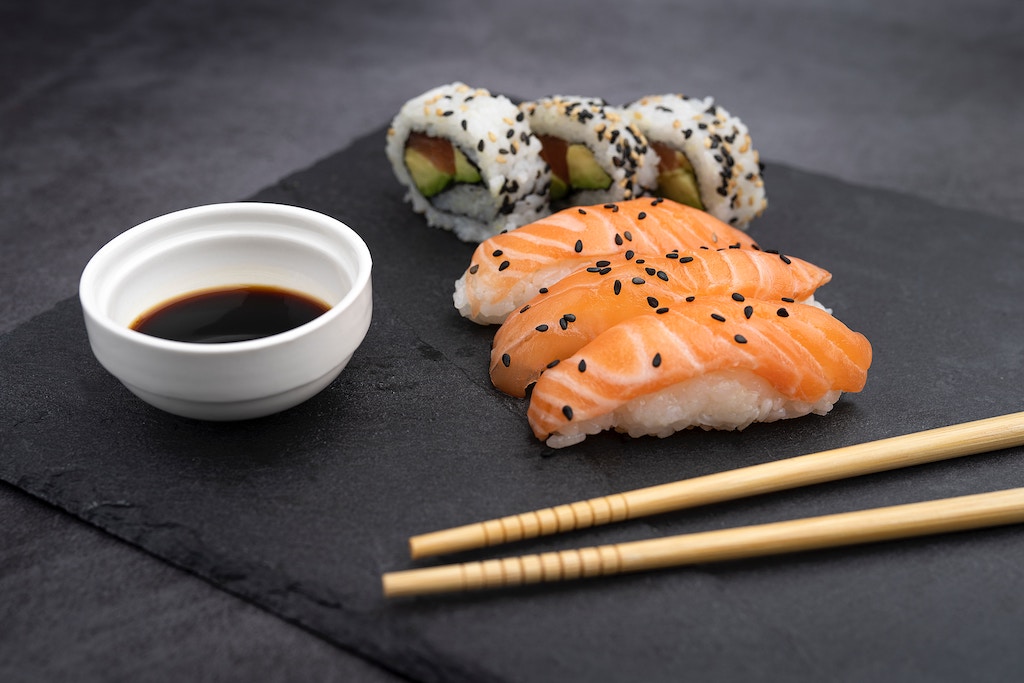When it comes to exploring world cuisines with gluten-free dietary restrictions, Japanese food stands out as a delectable choice. “Gluten-free Japanese food” offers a culinary adventure filled with captivating flavors and naturally gluten-free ingredients. In this article, we will delve into the realm of gluten-free Japanese cuisine, uncovering delightful dishes, ingredients, and dining experiences that cater to gluten-sensitive individuals.
Understanding Gluten-Free Japanese Food: Gluten-free Japanese food effortlessly blends fresh, gluten-free components into dishes that are both traditional and contemporary. Let’s explore some of the delectable options available to those who seek a gluten-free dining experience.
- Sushi and Sashimi – A Gluten-Free Gem: Sushi and sashimi, renowned for their simplicity and freshness, are perfect choices for individuals avoiding gluten. These dishes comprise a harmonious blend of fish, rice, seaweed, and vegetables, all naturally gluten-free. To enhance your experience, remember to ask for gluten-free soy sauce or tamari as a dipping sauce.
- Rice Dishes – A Gluten-Free Mainstay: Rice forms the cornerstone of Japanese cuisine. You can relish an array of rice-based dishes like donburi (rice bowls), onigiri (rice balls), and chirashi sushi, customized with gluten-free toppings and sauces.
- Gluten-Free Tempura – A Crispy Delight: While traditional tempura relies on wheat flour, some forward-thinking Japanese eateries offer gluten-free tempura options prepared with rice flour or alternative gluten-free flours. Always inquire about their preparation methods to ensure a gluten-free experience.
- Gluten-Free Noodles – An Alternative Delight: Japanese cuisine features an assortment of noodles, including rice noodles, soba (buckwheat) noodles, and gluten-free ramen. While soba noodles are typically gluten-free, it’s prudent to inquire about dedicated gluten-free options to prevent cross-contamination.
- Yakitori and Grilled Skewers – Flavorful Choices: Yakitori, the popular Japanese grilled skewers, often feature gluten-free ingredients such as chicken, seafood, and vegetables. Check that the sauces used for marinating or glazing are also gluten-free.
- Miso Soup – Naturally Gluten-Free: Miso soup, a beloved Japanese staple crafted from fermented soybeans, is generally gluten-free. However, it’s wise to be cautious if the soup includes wheat-based tofu or barley.
Dining Tips for Gluten-Free Japanese Food:
- Communicate Your Dietary Needs: Effective communication with restaurant staff regarding your gluten-free requirements is key. They can guide you to suitable menu options or even make special accommodations.
- Soy Sauce Awareness: Be mindful that standard soy sauce contains wheat. Request gluten-free tamari or shoyu when dining on sushi or other dishes.
- Cross-Contamination Concerns: To minimize cross-contamination risk, inquire about the restaurant’s kitchen practices and protocols for accommodating gluten-free diners.
- Discover Gluten-Free-Friendly Restaurants: Seek out Japanese dining establishments that cater specifically to gluten-free patrons or offer dedicated gluten-free menus.
Exploring “gluten-free Japanese food” is an enchanting culinary journey filled with diverse flavors and authentic experiences. By familiarizing yourself with gluten-free Japanese dishes, ingredients, and dining tips, you can savor the beauty of Japanese cuisine while adhering to your gluten-free lifestyle. So, embark on this flavorful adventure, let your palate indulge in gluten-free sushi, sashimi, and more, and discover the joy of gluten-free Japanese culinary excellence.
